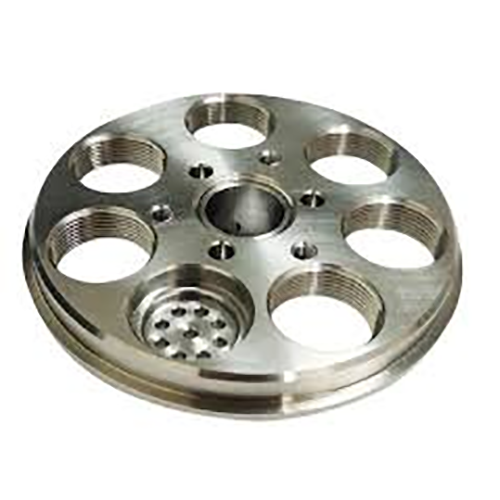
Achieving specified outer texture for a fabricated unit is critical.
- Specification callouts prescribe the detailed finish for parts
- Drawings commonly cite Ra, meaning root mean square average, to measure texture
- Interpreting finish callouts is necessary to guarantee parts satisfy functional criteria
- Designated finish alters fluid film formation, friction levels, and durability outcomes
- Precise decoding of callouts secures the specified finishing outcome
CNC Machining — Precision Engineering Explained

Numerical control machining stands as an advanced production approach with programmed toolpaths the apparatus generates complex components precisely.
- CNC equipment supports building precise items from many material classes
- Machine flexibility renders it suitable for medical device and electronics manufacturing
- Automated machining provides consistent reproducibility for uniform components
Across development to broad production CNC machining contributes fundamentally to manufacturing innovation
Comprehending CNC Machine Specifications
Grasping machine spec language may feel tough at first
Though a little background plus organization helps you interpret technical details effectively
Start with locating core parameters: spindle rpm, feed, accuracy, work envelope, controller
All attributes together shape the system’s production performance.
Consider that higher spindle velocity suits pliant materials while elevated feed boosts capacity.
Understanding these relationships will allow you to select the right CNC machine to match your specific requirements
Make sure to read supplier manuals attentively.
Producer documentation frequently delivers important notes and clarifies terminology
Comprehensive Guide to CNC Machinery
CNC machines are specialized computer-controlled systems used in manufacturing for precise and automated fabrication of various materials They interpret CNC code instructions to command cutting tools and motion.
- Examples of CNC types are vertical mills, CNC lathes, CNC routers, plasma cutters
- Processes are adaptable to metals, polymers, timber, and composite materials
- Plus CNC technology provides rapid prototype cycles and limited manufacturing for small firms and research units
CNC Fundamentals and Principles
They present marriage of accurate mechanics and advanced control software Multifunctional systems use programming logic to fabricate both simple pieces and composite assemblies The core idea is converting digital blueprints into tangible parts.
- Numerical control manufacturing
- Programmatic production integration
It comprises controlled axis moves directed by programmed code Operators play a crucial role in selecting the appropriate cutting parameters monitoring the operation and ensuring the quality of the final product.
The Role of Surface Finish in CNC Machining
Delivering planned surface condition during machining is necessary It determines product function and aesthetic quality Substrate properties, machining variables, and post-process methods shape surface outcome.
Refined surfaces boost longevity; rough surfaces can diminish functional performance Numerical control machining supplies multiple methods and cutters to obtain target textures.
- Consider using alternative cutting shapes |cermet inserts|RPM and feed adjustments to craft finish
- Also surface treatments such as grinding and polishing can refine textures
Comprehending the connections between machining choices and texture secures better results.
An Introduction to CNC Machine Operation
Programmed machining provides accurate part shaping across multiple material types They interpret digital toolpaths to carve detailed designs reliably Knowing programming basics and tool selection secures better machining outcomes
Use cases cover aerospace, automotive, medical, electronics, and more sectors From intricate propeller parts to exacting mold inserts, CNC produces accurate geometries
How to Specify Surface Finish for CNC Parts
Precise surface specification proves essential in CNC machining It assures alignment with required performance and visual expectations Finish specifications are often expressed via the Ra roughness standard Noted in microns or millimeters, the value quantifies average texture height.
Take into account target smoothness and how the part will be used when calling out finish

In practice smoother finishes help where exact fits and close tolerances are essential
Rugged finishes sometimes serve parts that need enhanced traction or grip
Insert concise surface notes in blueprints to articulate finish expectations List Ra value plus supplementary process guidance like polishing or coating.
Understand that effective surface annotations are critical to production success
Types of CNC Machines and Their Capabilities
CNC manufacturing hosts an extensive set of machines for assorted machining tasks They depend on CAD/CAM instruction to operate cutting tools for efficient part fabrication.
- Mills shape slots pockets and complex contours through rotary cutting
- Lathes excel at producing round parts such as shafts rods and bushings
- Plasma cutters employ ionized gas arcs to sever metal quickly and accurately
Choosing the right CNC depends on production goals material type and required accuracy Each type of CNC machine offers unique capabilities making them essential tools in diverse industries from automotive to aerospace.
Achieving Optimal Surface Finish with CNC Machining
Obtaining fine surface quality is important and CNC technology delivers consistent control to attain it By leveraging precise control over cutting parameters such as feed rate spindle speed and tool geometry machinists can effectively manipulate the material removal process to produce surfaces with minimal imperfections Furthermore the utilization of high-quality tooling materials and proper lubrication techniques contributes to a smoother finish Optimized cutting plans and meticulous setup procedures help achieve premium finishing.
CNC Programming to Achieve Surface Quality
Tuning code to influence finish plays a central role in meeting quality aims Feed selection spindle rpm and cutter geometry collectively determine texture outcomes Attentive parameter configuration alongside good coolant practice leads to superior surfaces.
- Continuous tool maintenance and oversight preserve high finish consistency Plus regular inspection and maintenance of tools copyright finishing standards In addition periodic tool servicing and checks secure consistent what is meant by cnc machine surface quality
- To enhance finish consider workpiece material, roughness targets and use case
- Simulation aids in adjusting parameters virtually to prevent surface problems
- Plus regular inspection and maintenance of tools copyright finishing standards
